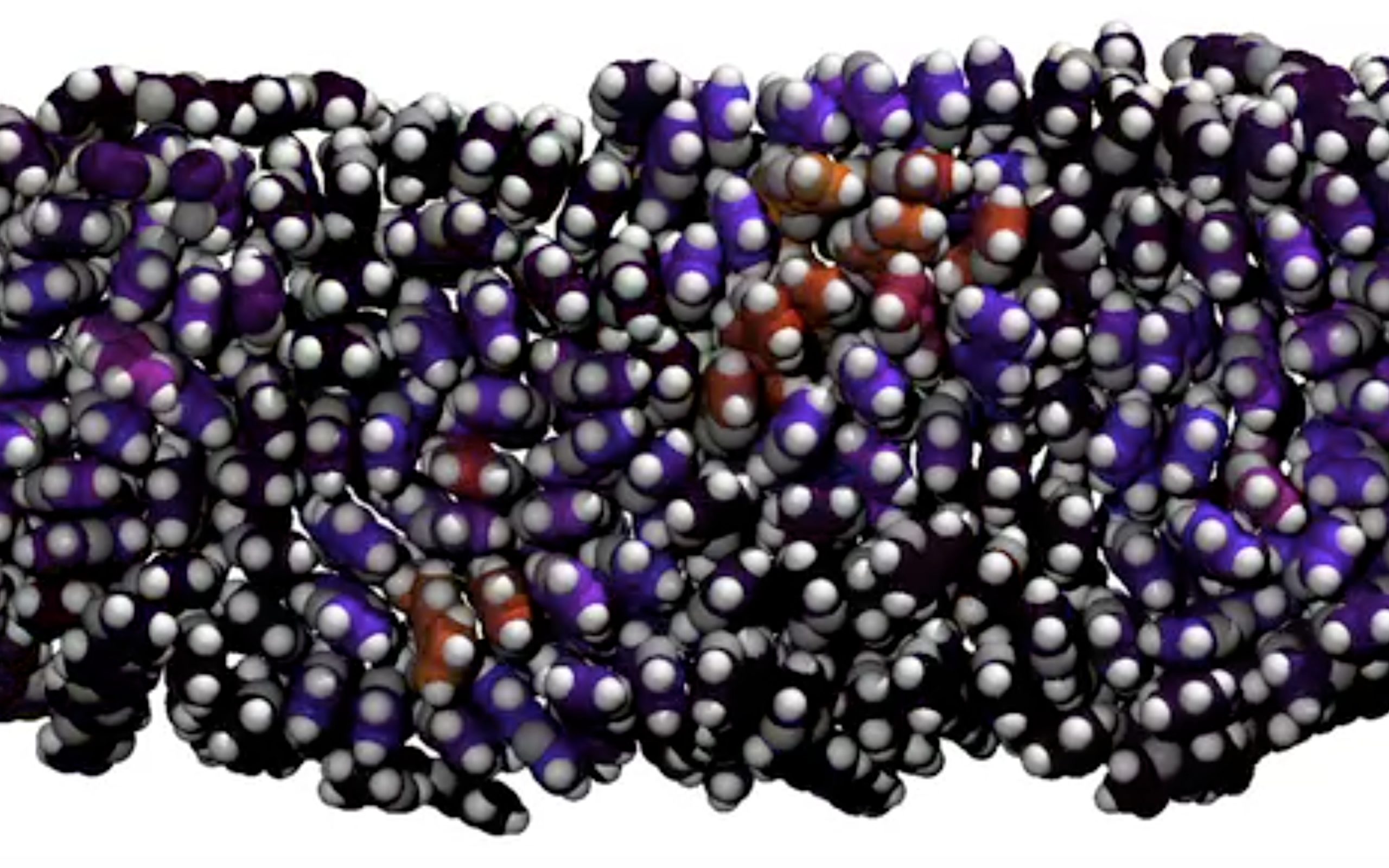
Modeling electron excitation in organic photovoltaic materials
Story by Helen Hill for MGHPCC
In this video meet theoretical chemist Adam Willard (MIT) using MGHPCC to better understand molecular level behavior of organic photovoltaic materials.
Adam Willard is an assistant professor in the Chemistry Department at the Massachusetts Institute of Technology. As a theoretical chemist he studies molecular systems using the tools of mathematics and high performance computing. In particular he uses theory and simulation to explore the role of molecular fluctuation in a variety of chemical phenomena among them hydration, catalysis and electron excitation in photovoltaic materials.
One focus in the Willard Group is on systems for which a mean field approach, i.e., the averaging out of molecular-level detail, fails to reproduce experimental results.
To extract electricity from photovoltaic materials — materials that react to light by generating an internal electric current — excited electrons must make their way out of the material to an external electrode where they can be collected. The ease with which they can do this impacts the efficacy of the material as a source for harvesting photovoltaic electricity.
While these films may appear smooth and homogeneous at macroscopic scales, looking at them under the microscope reveals them to be extremely disordered at the molecular scale — a giant tangle of unaligned molecules. It is this intrinsic disorder that makes it extremely difficult to predict exactly how an electron will behave once it is excited, and it is this that necessitates inclusion of molecular-level detail in computer simulations.
Modeling the behavior of excited electrons on a single molecule is already close to the limit of what is currently feasible. Seeking to explore excited electron behavior in an environment comprising hundreds of uniquely oriented independent molecules at the same level of detail remains beyond the reach of today’s computers.
To get around this Willard uses a multilevel approach. By simulating the behavior of excited electrons in models of individual molecules, he can then apply what he has learnt to inform a second class of models of electron excitation within systems of many simplified molecules without the need to model each component molecule in the larger system in minute detail.
You can read more about this and other projects at http://willardgroup.mit.edu.
Video credit: Helen Hill